5 NASA Software Codes You Can Download – For Free!
5 NASA Software Codes You Can Download – For Free!
One of the biggest steps of any mission starts right here on Earth at a computer desk – NASA runs on software, period. Rovers can’t move, spacecraft can’t fly, even rockets can’t blast off without the software codes that run them all.
We’ve compiled hundreds of these powerful codes into one location at software.nasa.gov. And guess what? You can start downloading them right now for free! Here are just a few you can use:
1. TetrUSS (Tetrahedral Unstructured Software System)
TetrUSS has been used extensively for space launch vehicle analysis and design, like on the Space Launch System, which is planned to take humans to Mars.

You really could say it’s helping us to “blast off.” Outside of NASA, this software has been used to analyze Mars planetary entry vehicles, ballistics and even high-altitude sky diver aerodynamics. Basically if anything has moved through any planetary atmosphere, this software has played a role.
2. KNIFE (part of the FUN3D software and released as a package)
The name may be a bit intimidating, but with good reason – KNIFE packs a powerful punch.

It was created to help us learn more about the sonic booms that resonate when planes break the sound barrier, but it has also helped develop green energy sources such as wind turbines and techniques to minimize drag for long-haul trucking. Maybe we should re-name this versatile and handy code, “Swiss Army KNIFE?”
3. Cart3D (Automated Triangle Geometry Processing for Surface Modeling and Cartesian Grid Generation)
If software codes went to high school, Cart3D would be Prom Queen. This software is so popular, it is being used in almost every mission area here at NASA.

Engineers and scientists are currently using it to model everything from advanced drones to quieter supersonic aircraft.
4. FACET (Future Air Traffic Management Concepts Evaluation Tool)
Frequent flyers: this may be your favorite code without even knowing it. FACET was developed to evaluate futuristic concepts in air traffic management, and it has served as a testbed for assessing today’s regular operations.

To sum it up, this software code helps airports keep planes organized in the air and on the ground.
5. GIPSY-OASIS
GIPSY-OASIS is part of the GPS system to end all GPS systems. It’s so accurate, John Deere used it to help create self-driving tractors.

How? John Deere already had a navigation system in the works, but it could only be used in certain parts of the world.

Our ground stations are all across the globe, and our software ensures accuracy down to a few inches. And so, a new breed of tractor was born! Did we mention this software is free?
These are just a few examples of the software NASA has available for free public and consumer use. To browse the catalog online, check out software.nasa.gov.
Make sure to follow us on Tumblr for your regular dose of space: http://nasa.tumblr.com
More Posts from Philosophical-amoeba and Others










Fairyland, or, Through the Enchanted Forest.
[Gloucester, England], [Roberts Brothers], [ca. 1890-1915].
Bryn Mawr College Special Collections GV1469.F221 T4 1890z
This whimsical board game, with its blinding powder, cabbage, meat, and cake tokens, has it all! Wild two-headed animals ravage the forest and hapless children must make it through armed only with odd grocery items! The game is a new addition to the Bryn Mawr College Special Collections as part of the Ellery Yale Wood Collection of Children’s Books.


Plantigrade vs. Digitigrade Carnivores - the Polar Bear and the African Lion
The foot structure of many animals plays a critical role in their locomotion and environmental niche, and in carnivores, the clear distinction between plantigrade (walking with the podials and metatarsals both flat on the ground) and digitigrade (walking on the toes, with the heel and wrist permanently raised) animals is most evident.
In plantigrade beasts - which include humans, many rodents, bears, racoons, and opossums - the larger surface area that the many bones provide can act as both a stabilizer and a very effective bearer of great weights. In fact, the big ol’ flighted dinosaurs were plantigrade. At the same time, so were the first (and relatively small) mammals, since both of them needed lots of stability in their feet. The weight-bearing ability and stable platform comes at the cost of speed, as the energy and requirements for movement of so many bones and muscles is much greater than digitigrade feet or unguligrade feet.
Digitigrade animals walk on only their toes, leaving their wrists and ankles permanently raised. This affords more speed, much more silent movement. Cats, birds, and dogs are digitigrade. Digitigrade feet evolved long after plantigrade feet, to fit the niche of mid-sized carnivores. However, they cannot effectively sustain large loads, which is why you cannot use a lion as a pack mule. Well, among other reasons. Really, you just don’t want to try using any mid-sized (or large, in the lion’s case) carnivore as a pack mule.
On the Anatomy of Vertebrates. Richard Owen, 1866.







#Feathursday: Innate and Learned Behaviors
Once again we bring you a portion of the educational series Man: A Course of Study. This booklet uses the Herring Gull to teach innate and learned behaviors. We wish we knew who the illustrator of this booklet was because they’ve done a great job helping us understand how baby bird brains work.
Man: A Course of Study was developed by Jerome S. Bruner, an American psychologist who wanted to build a curriculum to teach fifth graders about what it is to be human. He often used animals as contrast to help explain the biological nature of humans.
From the teaching series, Man: A Course of Study published by Curriculum Development Associates. Our copy is the first commercial edition published in 1970.
More Feathursday posts
Some of our other posts from Man: A Course of Study





One of my favorite things about working with archival materials is the opportunity to see earlier iterations of familiar, everyday items, such as this 1870 U.S. passport for chemical engineer Samuel Phillip Sadtler (1847-1923). While the text of the passport echoes that of contemporary ones (albeit in fancier script!), the size of the paper compared to today’s passbooks is staggering and the description of the passport holder is just delightful. In the absence of a photograph, we are advised that Sadtler, aged 22, has a “high” forehead, “straight” nose, “small” mouth, and “long” face, among other distinctive qualities. And since beauty is in the eye of the beholder, I wonder if there was some kind of standard for judging a forehead “high” or a face “long,” but perhaps that’s an archival find for another day.
Photo credits: Samuel P. Sadtler materials, 1867-1893. CHF Archives (accession 1989:02).
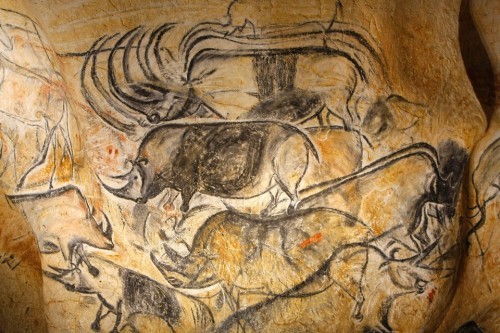

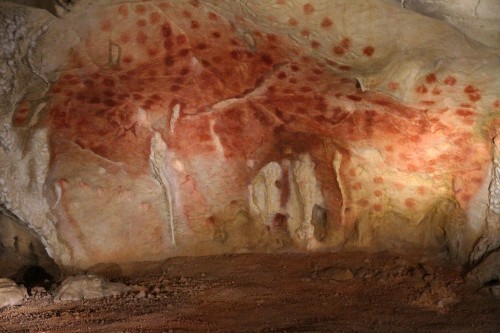


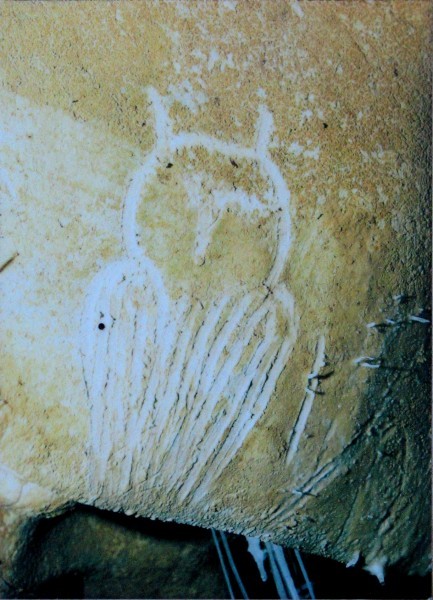
CHAUVET CAVE:
THE Chauvet Cave (also known as the Chauvet-Pont-d’Arc Cave) is a Palaeolithic cave situated near Vallon-Pont-d’Arc in the Ardèche region of southern France that houses impeccably preserved, exquisite examples of prehistoric art.
Now reliably dated to between c. 33,000 and c. 30,000 years ago, the numerous and diverse animals that dot the interior walls of the cave – both painted and engraved – show such high artistic quality that they were initially thought to have been closer in age to the similarly stunning, but much younger art in caves such as the Lascaux Cave. Its age and artistry have made us reconsider the story of art as well as the capabilities of these humans. The cave has been granted UNESCO World Heritage status.
Read More
Article by Emma Groeneveld on AHE
When my alcoholic uncle died - and how it impacted my life as a nurse
A recent post from another nurse was so beautifully honest and vulnerable that it made me lose my snark and just get human for a minute. So I will share an experience and I have permission from all involved. I had an uncle who was a terrible alcoholic. It ravaged every aspect of his life, his work as a union tradesman, his ability to be a father or husband and his relationships with his brothers and sisters. My mom and I often visited him when he’d get admitted to the floor. I could never bear to see him in the ER. Dirty, belligerent, withdrawing in the DTs. I was embarrassed because I knew he was a frequent flier. I was embarrassed that I was embarrassed. We tried to drop him groceries and buy his Dilantin every month, but he moved around a lot, mostly renting rooms above taverns. He wanted nothing to do with sobriety. He used drugs when he could, but whiskey was his poison. In the end he only tolerated a few beers a day to keep away the shakes. To any nurse or medic or doc who new him he was a local drunk, but to me he was my uncle. I knew him as a kind loving man as well. I remember family BBQs and him tossing me up in the air as a kid. I remember him showing up drunk to thanksgiving and not making it out out of the car before passing out. I remember the disappointment in my family’s faces. I remember the shame in his eyes. I remember driving around his neighborhood looking at the entrances of taverns to see if he was passed out. I wondered if anyone would know to call us if he died. I wondered if he even had any I.D. But they did call. And I knew when I saw him at age 55 in the ICU Weighing 90 lbs dying of Hep C and esophageal CA that he didn’t have a lot of time left. I was a nursing student and an ER tech but I knew in my heart this time was different. I saw people fear him. I saw nurses treat him as if he was a leper. One yelled at him to be still while she gave him a shot of heparin and he grimaced in pain. Nurses came in one by one to start a heplock and he grimaced in pain. Despite knowing better after the 4th nurse was unsuccessful I begged them to stop and give him a break. My hospital I worked accepted him into impatient hospice. I was relieved. When he arrived I saw the 2 EMTs toss him on the hospice bed and walk out without saying a word while he grimaced in pain. They probably got held over and he probably didn’t seem like an urgent transport. They didn’t want to touch him. I didn’t say anything. I was scared to touch him too. He was emaciated with a huge head and a gaunt appearance. I wondered if he had AIDS. I felt bad for thinking that. I still kissed his forehead and told him he was going to be okay. Because I loved him. He was my family. And then I saw nurses treat him with kindness. I saw the beauty of a non judgemental hospice team make his last 96 hours on Earth a time where he could make peace with his demons. I saw Roxy drops for the first time and I saw him get some relief from the pain of untreated cancer, from the pain of dying. I saw them allow me break the rules and lift his frail body into a wheelchair, fashion an old fashioned posey to hold him up and take him down stairs for his last cigarette on Route 30. I was able to spend my breaks with him. I got to suction him and help give him a bed bath. I got off my 3-11 shift and spend a few hours with him watching a baseball game on replay. I sat with him in silence and I held his hand. I finally knew what people meant when they said the dying watch their life play out in their minds. I swear I could see it happening. I asked him if he was thinking about things he said “yep”. I asked him if he wanted me to stay or go and he said “stay”. So I stayed. I heard the death rattle for the first time. I cried to a veteran hospice nurse and she explained how the Scopolamine patch would help. I finally felt what it was like to be helpless to a family member in need and her words of comfort and years of experience meant everything to me. She said he probably had 48 hours at the most. I read “Gone from my sight” the blue book of hospice by Barbara Karnes. The whole family trickled in. His kids, all his brothers and sisters and nieces and nephews. His children told him they loved him and they forgave him. We kissed his forehead and washed his hair. My mother shaved his face. His daughter said words of kindness that relieved him of any guilt or regret. I saw this beautiful cousin of mine watch me suction him and she asked how I could be so calm and so strong. I didn’t feel strong or knowledgeable but when you are the “medical person” in the family they see things in you that you didn’t know you had. We surrounded him with love and light and he died surrounded by everyone who ever meant anything to him. The nurses even cried. I got to see the dying process for what it was. It was beautiful and at the same time so humbling it brought me to my knees. I have never forgotten that feeling and I pray I never do. Is alcoholism a disease? We debate it as health care providers and wonder about the others whose lives have been impacted by the actions of an alcoholic. The amends that never got made. I guess I don’t care if it’s a disease, a condition, or a lifetime of conscious choices and poor judgement. In the end it’s a human being, usually a dirty foul smelling human being with missing teeth who may or may not be soiled in urine and vomit. Sometimes kicking, hurling obscenities, racial slurs, or spitting. Often doing all of the above at once. It’s hard to empathize with a human being who arrives packaged up that way. It’s hard to care or to want to go above and beyond. And I don’t think you should ever feel guilty if you don’t have those feelings. That is okay. It’s natural to wonder about the damage these people may have done to others. Wonder how many lives they might have ravaged. Please don’t take their pain as your own. At least try not to. It is not your pain to carry. And we all know that is easier said than done. But please, Treat them with dignity. They feel. They hear you. Give them the care you know you are capable of giving. I can tell you I hold a special place in my heart for every nurse who touched my uncle with a gentle hand. Who cleaned him for the fifth time when he was vomiting stool. Who asked him to smile. Who smiled back at him. Who stroked his forehead and put a cool washcloth on it. I am eternally grateful for anyone that saw beyond his alcoholism and saw a person. A human. A child of God (if you believe in God). A father. A son. An uncle. And I believe in my heart he felt the same way, even if he didn’t or couldn’t say it. If you have that patient. That difficult, hard to like, dreadful patient. Don’t think you have to love them or even like them. You don’t. But if you can preserve their dignity and show them the kind of nursing care that anyone would deserve, than you are good. You are the reason we are the world’s most trusted profession. And even though you don’t know it, someone saw and felt it, and it meant the world to them. Go to bed and sleep soundly because you deserve that. - J.R. RN


“The Mouse chirpeth… The Duck quaketh… The Wolf howleth” — from the very first picture book for children, published in 1658: http://buff.ly/2l6FaBH

Which Shakespeare Play Should I See?
This coming Saturday is the 400th anniversary of Shakespeare’s death! Not sure what Shakespeare play you should see or read to commemorate the occasion? No worries! I’ve put together a little flowchart to help you make up your mind.
HAPPY SHAKESPEARE-ING, EVERYONE!
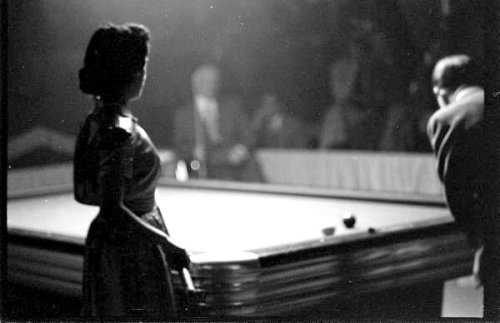
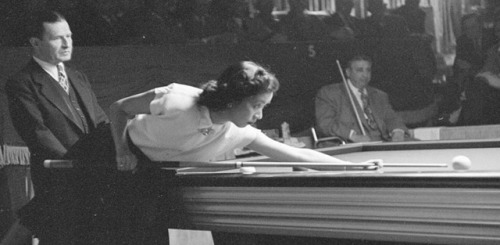
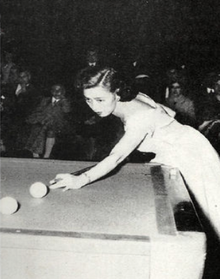

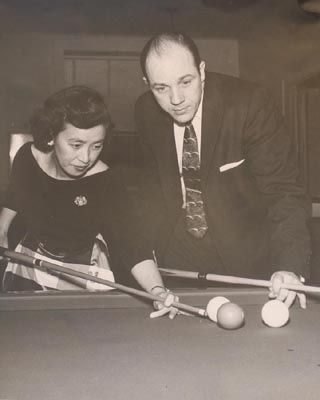

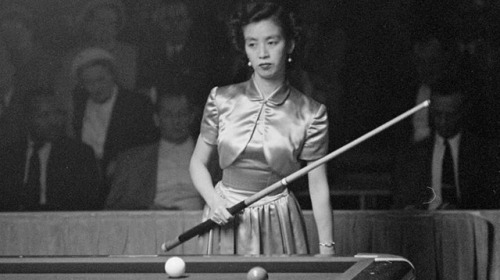
“Men want to beat me. I play men, six, seven hours a day. Men… they do not beat me.”
- Masako “Katsy” Katsura, first woman to compete for a world’s title in billiards
The “First Lady of Billiards” learned from her brother-in-law and in the 50s became Japan’s only female billiards pro. She paved the way for women to come, then left the spotlight and lived a quiet life. She died in 1995.










The Roly Poly Pudding - Beatrix Potter
First Edition - Second Printing 1908
[5500 copies Dec. 1908]
-
 shutupandsim liked this · 1 year ago
shutupandsim liked this · 1 year ago -
 margaretnotmargret liked this · 3 years ago
margaretnotmargret liked this · 3 years ago -
 indyscott liked this · 4 years ago
indyscott liked this · 4 years ago -
 itsmerob liked this · 4 years ago
itsmerob liked this · 4 years ago -
 meadowglow liked this · 4 years ago
meadowglow liked this · 4 years ago -
 mikec169 liked this · 4 years ago
mikec169 liked this · 4 years ago -
 earnwomen21 liked this · 4 years ago
earnwomen21 liked this · 4 years ago -
 insidecustoms25-blog liked this · 4 years ago
insidecustoms25-blog liked this · 4 years ago -
 writtenstood36 liked this · 4 years ago
writtenstood36 liked this · 4 years ago
A reblog of nerdy and quirky stuff that pique my interest.
291 posts